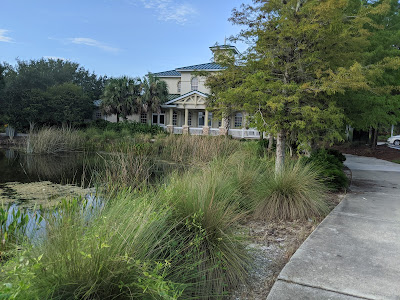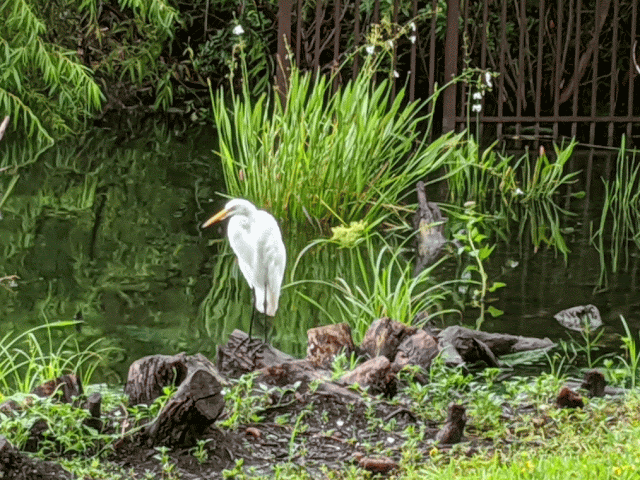Painiting by John Michelman
How to Stop the Growth of Lake Algae
A Scoop reader asks, “What can be done to stop the growth of lake algae?” To answer, I will describe the algae, their impact, and attempted solutions.
The name for Lake Uihlein (pronounced E-line) algae is Chara aka Musk, or Skunkweed. They have a distasteful, garlicky odor and grow into brownish, contiguous “blooms” that can obscure the lake water beneath. Algae compete with beneficial water plants and clog storm drain outlets.
They are always hungry for fertilizer nutrients like nitrogen and phosphorus, which pass unfiltered into lake storm drains. They also like dog feces and grass clippings, both common in grassy areas. Summer rains increase the flow of fertilizer nutrients, dog feces, and grass clippings into the lake and thereby promote algal growth. Quick fixes, like herbicide applications can be effective in the spring, but reapplications carry potential copper accumulation risks for fish.
Physical removal of algae looks good initially but fragmented spores regenerate the colonies. Longer-term, ecological solutions stress growth constraints rather than elimination. Stocking the lake with algae-eating Grass Carp provides one constraint on algal growth. A mature Grass Carp can eat 100% or more of its weight in algae daily.
A ban on fertilizers that contain nitrogen and phosphorous provides a second constraint. Growing lake plants, rather than grass, on shorelines provides a third. Some of these efforts have already been implemented. Lakewood Ranch management has stocked the lake with Grass Carp.
Manatee County prohibits use of fertilizers with nitrogen from June 1 to September 30, the top growth period, and bans the application of fertilizers with phosphorous. The replanting of shorelines has yet to be achieved, because such efforts are voluntary and vary widely. The Lakewood Ranch Garden Club has replanted the area behind Town Hall, but the golf course continues to maintain grass, even at the lake’s edge.
The ideal shoreline would begin with a no-mow line and progress to lake-rooted water plants like flowering “Duck Potato.” The tall and attractive Waterfront “Duck Potato” plant not only competes with and obscures the algae but also attracts dragonflies, which eat midges.
In summary, lake algae are always present but increase during summer rains. Herbicides and physical removal provide quick, but temporary fixes. In contrast, ecologically- balanced approaches, like the three described here, can effectively curtail algal growth, although not eliminate it.
John Michelman
Subscribe to:
Comments (Atom)
-
Click to read https://www.pinellascounty.org/environment/watershed/pdf/adoptapond/Lakefront_Revegetation.pdf
-
A Scoop reader asks, “What can be done to stop the growth of lake algae?” To answer, I will describe the algae, their impact, and attempted...



















